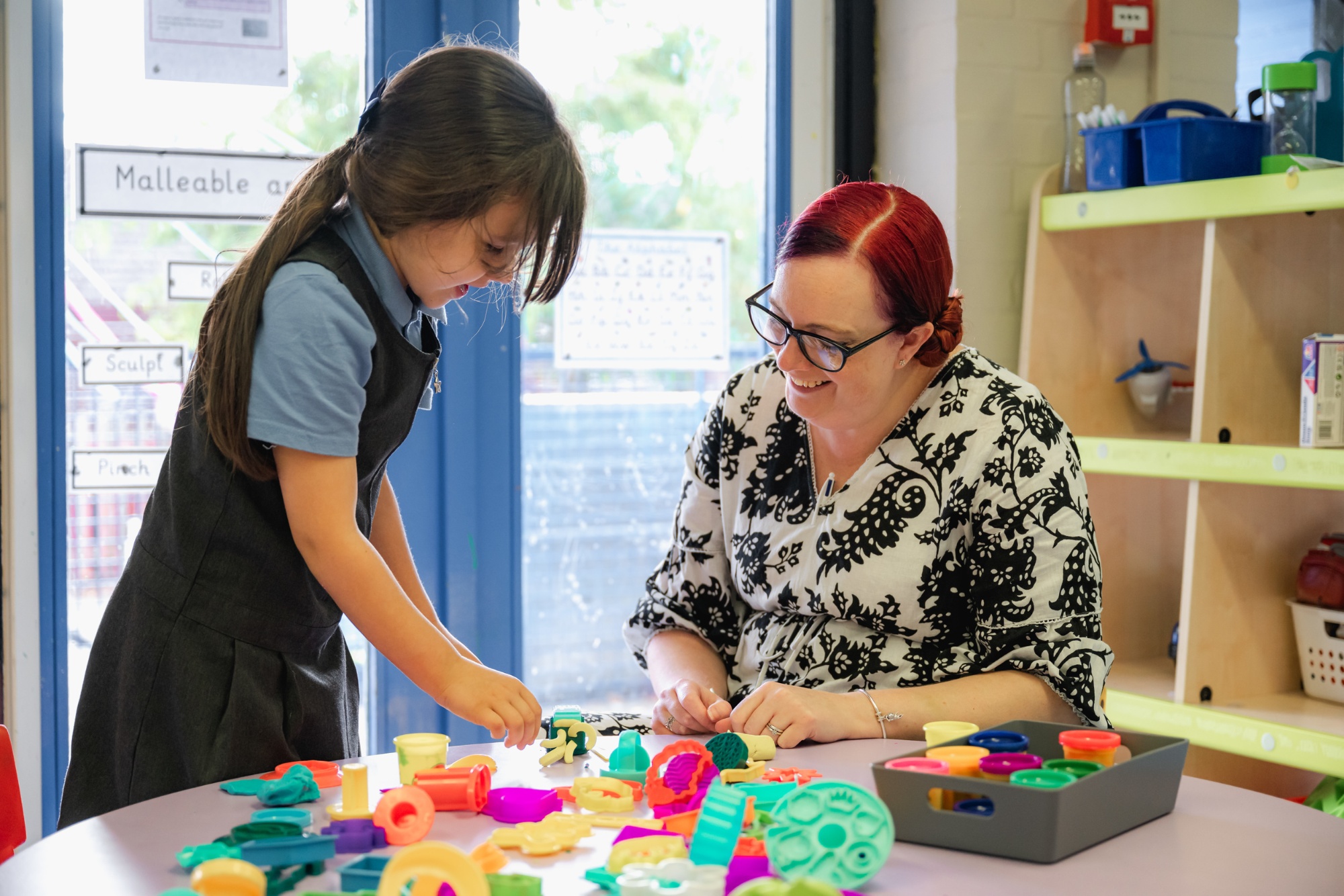SEND
At Raleigh Infant and Admirals Academies we value all members of our school community. We welcome everybody into our academy community and aim to support every child to reach their full potential.
This report outlines the provision for children with SEN in our schools. We welcome your comments on our offer, so please do contact us. The best people to contact are:
SEND Co-Ordinator – Mrs Victoria Hall
Executive Principal - Mr Greg Sadler
We can be contacted by phone on 01842 753993 email: office@ral.eastern-mat.co.uk for Raleigh children or office@adm.eastern-mat.co.uk for Admirals childen. Alternatively, you visit the Academy office to arrange a meeting.
Schools and parents/guardians have access to services universally provided by Norfolk County Council, which are described on the Local Offer website.
hppt://www.norfolk.gov.uk/children-and-families/send-local-offer

Intervention
What is Forest School?
Forest Schools is a brand of learning that has a wide range of benefits. In the forest school philosophy, children interact with a natural landscape and each other to learn social and technical skills. There is a big focus on developing confidence, self-esteem, and independence.
What are the key skills that it promotes?
Many, although not all, of the key skills developed by forest school can be linked to personal and social development. The main skill sets are the following:
- Discipline
- Self-awareness
- Empathy
- A positive mental attitude
- Self-esteem
- Teamwork
- Independence
- Confidence
What are its other benefits?
- Children learn how to live a healthy lifestyle
- They form excellent relationships with others
- They develop their speaking and communication skills at an accelerated rate
- They learn to manage risks
- They learn about the environment
- They understand features of nature
What is Lego Therapy?
Lego-based therapy is an evidence-based approach that aims to develop social communication skills in autistic children, such as sharing, turn-taking, following rules, using names and problem-solving. Lego therapy interventions can be an option for children who have difficulties with:
- Communication and language
- Social skills e.g making friends
- Expressing how they feel
- Problem-solving activities
- Sticking to a task
- Teamwork
- Fine motor skills
- Understanding and following instructions.
Many benefits can be brought into the lives of young people and children through Lego therapy interventions, including:
- Communicate with others effectively
- Use improved social skills
- Solve problems using different strategies
- Identify and discuss their feelings
- Persevere and be resilient when something isn’t achieved first time
- Use improved fine motor skills
- Understand and follow instructions
- Work as part of a team
- Effectively use spatial, visual, and analytical skills
In practice, children work in groups of three with each participant having a distinct role to build a Lego model collaboratively:
- Engineers use the Lego instructions and ask the Supplier for the specific pieces of Lego needed.
- Suppliers gives the Builder the pieces.
- Builders follow the building instructions from the Engineer to construct the model.
What is Emotional Literacy?
Emotional literacy is a developed awareness and understanding of our own and others' emotions. This guides our thinking and is expressed in our communication and behaviour. Emotional self-awareness is the ability to know ourselves and understand our own feelings.
Teaching emotional literacy is important for developing self-confidence, for boosting self-esteem, for social and emotional development and for encouraging emotional self-management over impulse reactions. Developing emotional literacy aids a child's mental health as well as physical health as both are inextricably linked. There will always be pupils in school facing life challenges that affect their ability to engage with learning and some will require greater support than others to increase their emotional literacy. Emotional literacy support is an intervention programme, designed to support the emotional needs of pupils in school. It recognises that children learn better and are happier in school if their emotional needs are also addressed.
What is an ELSA and what is their role?
An Emotional Literacy Support Assistant (ELSA) is a specialist teaching assistant who has attended a full ELSA training course delivered by one or more fully qualified educational psychologists. They are trained to plan and deliver programmes of support to pupils in school who are experiencing temporary or longer term additional emotional needs, for example: anxiety, low self-esteem, reduced social or friendship skills, anger management, loss, or bereavement. Sessions are fun and we use a range of activities such as games, role-play with puppets or therapeutic activities such as mindfulness or arts and craft. We are not here to fix pupils' problems but what we can do is provide emotional support. We aim to establish a warm, respectful relationship with a pupil and to provide a reflective space where they can share honestly, their thoughts and feelings.
What is Sensory Processing and how is it supported?
Sensory Integration is the process by which the brain receives, organises, and processes all the information received from the senses. The senses include touch, sight, hearing, smell, taste, body position and movement (proprioception) and balance/position against gravity (vestibular). The information received from these senses help us to make sense of the world. Effective sensory integration and processing enables us to respond appropriately to different stimuli in our environment and informs our everyday functioning. An inability to effectively process, organise and correctly interpret sensory information is known as Sensory Processing Disorder (SPD). Children with SPD may find functional daily activities challenging. The severity of these difficulties can vary greatly.
If a child is having difficulties with sensory processing, we may see:
- A child who doesn’t like to be touched by others
- A child who refuses to engage in messy play
- A child who appears constantly anxious
- A child who is half asleep, needs to be prompted to engage in a task
- A child who avoids moving, climbing, swinging, or sliding
- A child who puts their hands over their ears and complains of noise
- A child who becomes easily overly excited
- A rigid, stiff, and tense child
- A child who must always touch objects, people, constantly fiddles
- A child who can’t sit still and constantly fidgets A child who likes to run around.
Such behavioural clues can indicate that a child is not fully ready for learning. This is where sensory circuits can help.
What is a Sensory Circuit?
A sensory circuit is a form of sensory integration intervention. It involves a sequence of physical activities that are designed to alert, organise, and calm the child. The sensory circuit aims to facilitate sensory processing to help children regulate and organise their senses to achieve the ‘just right’ or optimum level of alertness required for effective learning. The circuit should be an active, physical, and fun activity that children enjoy doing. Sensory circuits are a great way to both energise and settle children so they can focus and engage better in the classroom. Many children can benefit from attending a sensory circuit, even for a short period of time. The activities can also be utilised at different times of the day as part of a sensory diet to help the child regulate.
Sensory circuits are designed to start with alerting activities, move to an organising phase and then finally to a calming phase. Doing the activities in the recommended order is vital. The right order results in a well-regulated, happy child. The wrong order may well result in a dysregulated, upset, or irritable child and have the opposite effect.
Alerting
The aim of this section is to provide vestibular and proprioceptive stimulation within a controlled setting. This prepares the brain for learning and the demands of the school environment. Example activities: Jumping/bouncing on a trampoline, skipping, running, rolling, and bouncing on a yoga ball, animal walks, step ups, star jumps etc.
Organising
This section includes activities that require motor sensory processing, balance, and timing. These activities help improve focus and attention. The child needs to organise their body, plan their approach and do more than one thing at a time in sequential order. Example activities: Balancing, climbing, log rolls, throwing to a target, wobble boards, weaving in and out of cones, throwing and catching, jumping through hoops etc.
Calming
The calming activities are very important as they provide input to ensure that children leave the circuit and return to their classrooms calm, centred and ready for the day ahead. Example activities: Proprioceptive and deep pressure e.g., yoga ball squashes, lying under a weighted blanket, massage arms/legs, linear swinging or rocking, heavy muscle work e.g., crawling through a tunnel, press ups etc.
For most effective outcomes, sensory circuits should be completed on a regular basis. Ideally, the circuit will take no more than 15-20 minutes. The children should spend up to 5 minutes in each section performing the different activities.
It is important to consider that each child’s needs and tolerance levels are different. Some children may need more time in the alerting or calming sections to enable them to be more organised and prepared for the day’s learning. Children should be encouraged but not forced to participate in the circuit and must always be supervised.
Advice for Parents
There are a number of agencies that can provide a range of support for parents with SEND children. Please click on the links below for further information, alternatively you can find more useful information here.
- Just One Number - School Nurses
- Norfolk Local Offer – information about SEND in Norfolk
- www.norfolkparentpartnership.org.uk – Information to support parents locally
- www.familyvoice.org.uk – Information to support parents locally
-
Norfolk SEN Network - The aim of the Norfolk SEN Network is to help parents of children with special educational needs to find the right educational placement or provision to meet their needs.
- Norfolk SEND partnership The Norfolk SEND Partnership provides free and impartial information, advice and support about special educational needs & disabilities (SEND) for children, young people, parents and carers.
- SEND: Guide for Parents and Carers The Department for Education publishes a guide on the support system for children and young people with special educational needs and disability (SEND).
- Active Norfolk Active Norfolk has an area of their site dedicated to helping people with disabilities keep active.
Support for Parents Based on Specific Needs
There are many websites which can provide help, support and guidance on specific needs, and we have tried to provide you with a few of these below. Within these websites you will find an array of useful information and guides.
Attention Deficit and Hyperactivity Disorder (ADHD/ADD)
Autistic Spectrum Disorder (ASD)
Norfolk Neurodevelopmental Service (ASD/ADHD ...)
Suffolk Neurodevelopment Pathway
Dyslexia
Dyspraxia
Helpful Medical Information
Speech, Language and Communication
Sensory
Social Emotional and Mental Health (SEMH)
SEN Information Report Summary
Welcome to our SEN report which is part of the Norfolk Local Offer for learners with Special Educational Needs and Disability (SEND). This information is updated annually.

